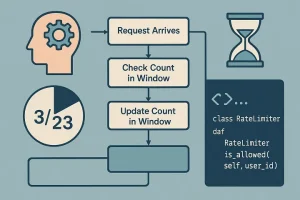Exploring Cutting-Edge Robotics Control Techniques
Robotics control techniques have evolved rapidly, transforming the way machines interact with their environment and perform complex tasks. As automation and intelligent systems become increasingly prevalent, advanced control methodologies are at the heart of unlocking the full potential of modern robots. From industrial automation to autonomous vehicles and medical robots, these innovative control strategies enable precision, adaptability, and efficiency in robotic operations.
In this article, we will delve into some of the most impactful cutting-edge robotics control techniques that are shaping the future of automation. We will uncover how these approaches address challenges such as real-time decision-making, environmental adaptability, and seamless human-robot interaction.
Understanding Robotics Control Techniques
Before exploring the latest advancements, it’s important to understand what robotics control techniques encompass. They refer to the algorithms and strategies used to direct a robot’s movements and behaviors to achieve desired objectives. Traditional methods, like PID (Proportional-Integral-Derivative) controllers, have been widely used to regulate robot actuators and maintain stability. However, as robots are tasked with more complex and dynamic environments, conventional approaches often fall short in terms of agility and intelligence.
Emerging control techniques integrate elements from artificial intelligence, machine learning, sensor fusion, and advanced mathematics. This interdisciplinary synthesis results in smarter controllers able to learn, predict, and adapt continuously.
Adaptive Control and Learning-Based Methods
One of the most promising branches in contemporary robotics control techniques is adaptive control combined with machine learning. Adaptive control allows a robot to adjust its parameters in response to unpredictable changes in its environment or internal dynamics. When paired with learning algorithms, such as reinforcement learning or deep neural networks, robots can improve their control policies through experience without explicit human programming.
For instance, reinforcement learning enables robots to optimize motor commands through trial and error, maximizing performance based on reward feedback. This has been demonstrated in tasks ranging from robotic grasping to autonomous drone navigation. Such self-improving controllers are invaluable in scenarios where predefined models are inadequate or models are difficult to establish.
Model Predictive Control (MPC)
Model Predictive Control is another state-of-the-art robotics control technique extensively used for handling multivariable systems with constraints. MPC works by solving an optimization problem at every time step to determine the best control action over a finite future horizon. This foresight allows robots to anticipate possible future states and avoid undesirable outcomes such as collisions or instability.
Robotics applications benefiting from MPC include autonomous driving, where the vehicle needs to plan trajectories while adhering to road rules, and robotic manipulators requiring precise coordination under different loads. MPC’s capability to integrate system dynamics and constraints in real-time control makes it a standout method for achieving both robustness and performance.
Hybrid Control Architectures
Hybrid control architectures blend discrete decision-making with continuous control, offering a versatile framework for robotics. This approach segments robot operations into hierarchical layers where high-level planning decides the sequence of actions, and low-level control ensures smooth execution. Examples include combining finite state machines or behavior trees with classical control loops.
Such architectures are particularly effective in complex environments that necessitate mode switching, such as legged robots alternating between walking, running, and balancing, or service robots interacting with humans. The flexibility and modularity of hybrid systems allow engineers to design adaptable and maintainable controllers.
Sensor Fusion and Feedback Integration
Reliable sensory information is crucial for effective robotics control techniques. Sensor fusion involves merging data from multiple sensors—like lidar, cameras, inertial measurement units (IMUs), and tactile sensors—to create a coherent understanding of the robot’s surroundings.
Advanced filtering algorithms, such as Extended Kalman Filters (EKF) or Particle Filters, are often used to reduce noise and improve the accuracy of sensor data in real time. Integrating multimodal sensory feedback into control loops enhances environmental awareness, enabling more precise adjustments in motion and interaction forces.
Human-in-the-Loop Control
As robots increasingly operate alongside humans, robotics control techniques must accommodate human inputs and preferences. Human-in-the-loop control strategies incorporate real-time feedback from human operators or users, allowing for shared control between autonomous systems and people.
Techniques like impedance control regulate the interaction forces between robots and humans, ensuring safety and compliance. Furthermore, brain-machine interfaces are emerging as tools for intuitive robot control, particularly in assistive robotics and prosthetics.
The Future of Robotics Control Techniques
The ongoing convergence of robotics with artificial intelligence promises even more sophisticated control methods in the near future. Integration of explainable AI models, real-time cloud computing, and edge intelligence will further enhance how robots perceive, plan, and act. Additionally, advancements in soft robotics and bioinspired designs will require novel control techniques capable of managing flexible and deformable structures.
In conclusion, cutting-edge robotics control techniques are the backbone of modern automation, driving innovations that empower robots to perform increasingly complex tasks with autonomy and precision. From adaptive learning to hybrid architectures and sensor fusion, these approaches will continue to expand the horizons of what robots can achieve. For anyone involved in robotics research or application, staying abreast of these techniques is essential to harness the full capabilities of tomorrow’s intelligent machines.




